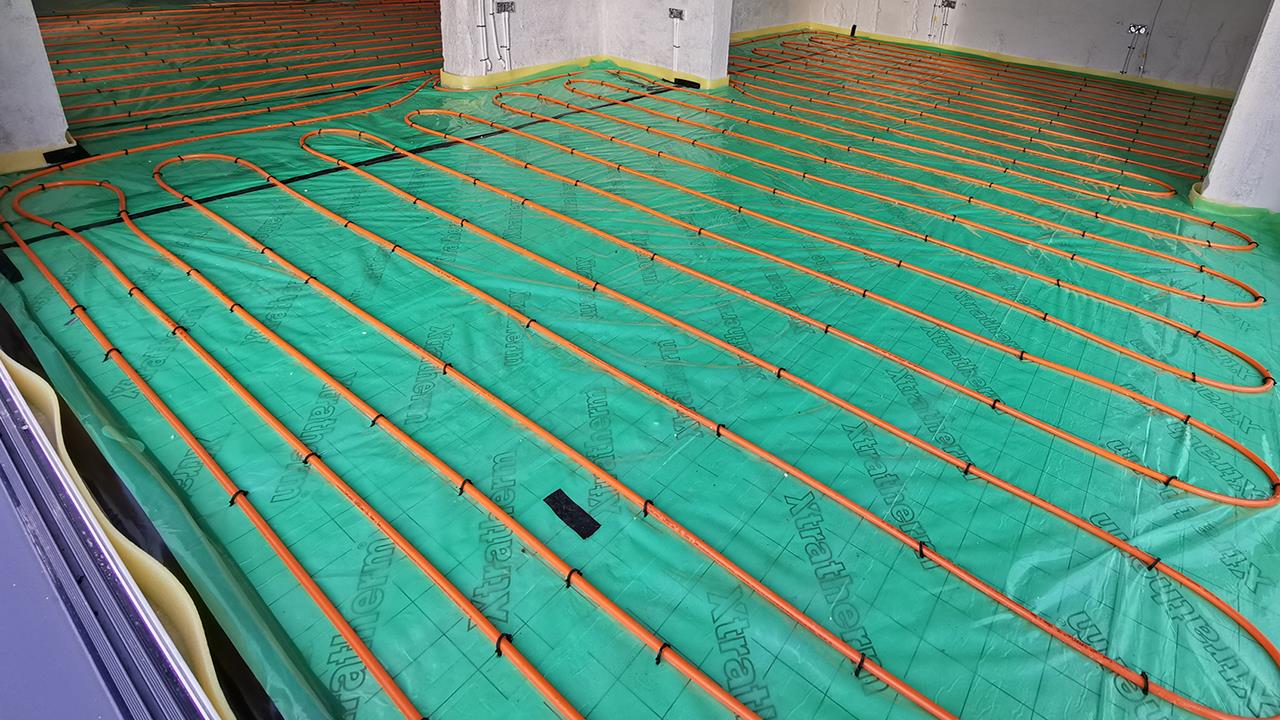

Chris Ingram, Founder of Continal Underfloor Heating, offers his top tips for plumbers and heating engineers looking to install underfloor heating for the first time.
Underfloor heating (UFH) has been a staple of the UK market for decades, but there are still many plumbers and heating engineers who have not yet tried installing the technology. Some may believe that only specialist underfloor heating installers can work with the technology, but as long as you do your research and prepare thoroughly, UFH is easy to fit and offers considerable benefits to the homeowner.
UFH becomes even easier to install when you have the backing of an experienced manufacturer who can be on call to help you with any questions you may have. Here, we outline some of the UFH tips and tricks that will help to make your first UFH installation simple and straightforward.
Educate yourself
Before you choose the right system, or even lay a single pipe, it’s important to understand the different types of systems and components available, so that you can advise your customer on the best fit for their property.
Many different systems have come on to the market in recent years, including screed, joist and over floor systems, not to mention the ‘area packs’ that can often be found online or in some builders’ merchants.
Each system has its own benefits, and some work much better and more efficiently than others. As your own experience will tell you, going with the cheapest option isn’t always the right choice, even if you’re working to a tight budget. Instead, choose a manufacturer that belongs to the underfloor heating trade association, take the time to look at their online reviews, and seek their advice on which is the best system type to use.
Plan thoroughly
Make sure that you know the order of works backwards and forwards before you start the actual installation. It’s easy to miss a step if you’re not fully prepared, and since a quality UFH system could be under the floor and in operation for 30 years or more, you don’t want to find you’ve missed something after the screed has been poured or the floor laid.
It’s also important to consider the UFH in the wider context of your customer’s house and heating system. The manufacturer you choose should take into account the existing heating system and insulation when they’re designing the system, but you may want to think about whether the homeowner would want their heating system to be futureproofed so that it will work with low temperature heat sources, such as renewables.
A well-insulated house built to current standards will have very different heat losses compared with an older property that’s being renovated, so it’s important to gather all the information about the property’s insulation, floor coverings, construction, and heat sources to help the manufacturer advise you on which is the best system to choose.
Measure twice, cut once
Before you begin to install the system, check that you have everything you need, double-check each room layout and so that you’re completely sure before you cut any pipes or panels, for example. And, if in doubt, ask your manufacturer. A good supplier will have the experience, time and patience to be able to talk you through anything you may be unsure of.
Use qualified experts when needed
Most components of an UFH system can be installed by any tradesperson with the support of an experienced manufacturer, but there are certain areas where you must hold specific qualifications, or seek the help of someone who does, particularly when it comes to electrics and gas works.
Any electrics from the wiring centre to the boiler, and to the fused 13A spur, must by law be carried out by a Part P-qualified electrician. If you’re connecting the UFH to a gas boiler, then legally it must be commissioned by a Gas Safe-registered engineer. So, if you aren’t Gas Safe registered, again, in this instance you’d need the help of a qualified person.
Make the most of the manufacturer’s help
Any manufacturer worth their salt will be available to offer help at every stage of the UFH system’s installation. They can answer any questions you may have, and will also be happy to talk to your customer if they need further advice or reassurance.
Leading manufacturers will provide detailed CAD plans, designs, and full installation instructions, so make sure you have those before you start, and make the most of all the advice they offer. Some people might believe that they can learn UFH design in 10 minutes from a YouTube video, but in fact a lot of complex work and calculations goes into making sure the system design is correct first time, so always trust the experts.
Take your time
It may take an experienced and practiced UFH installer as little as half a day to fit a system, but if this is your first installation, take your time and be realistic – don’t be tempted to rush. And don’t be afraid to ask for help and advice if you need it. Once installed, a UFH system is in the floor for good, so you don’t want to make a mistake, or you may have to deal with frustrated customers and unwanted callbacks.
And, finally, always read the manual! Don’t just throw it away – it contains some really important guidelines and tips that will help make the whole job easier.
The final step
Once your installation is finished, take pictures of the installation and send them to the manufacturer. Any good company should keep those on file for you for future reference, if you ever need it.
If you'd like to keep up-to-date with the latest developments in the heating and plumbing industry, why not subscribe to our weekly newsletters? Just click the button below and you can ensure all the latest industry news and new product information lands in your inbox every week.